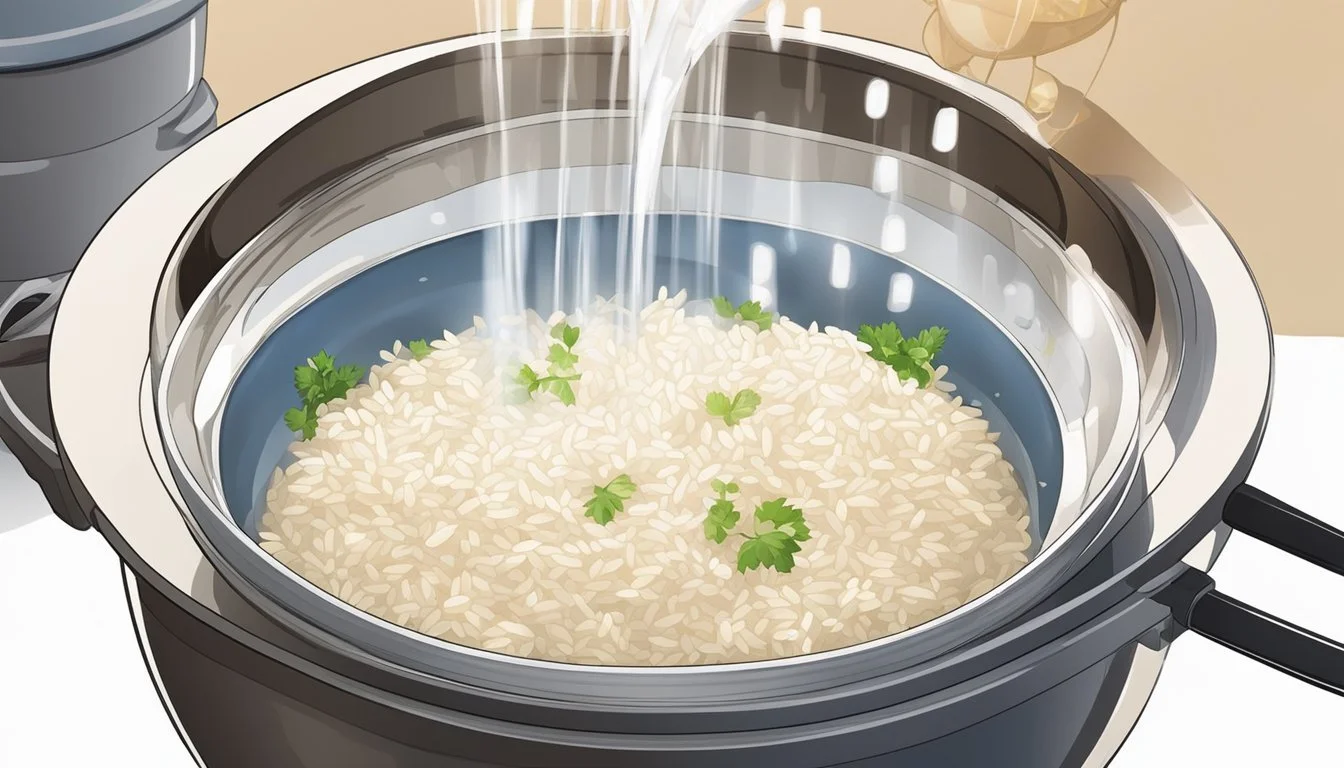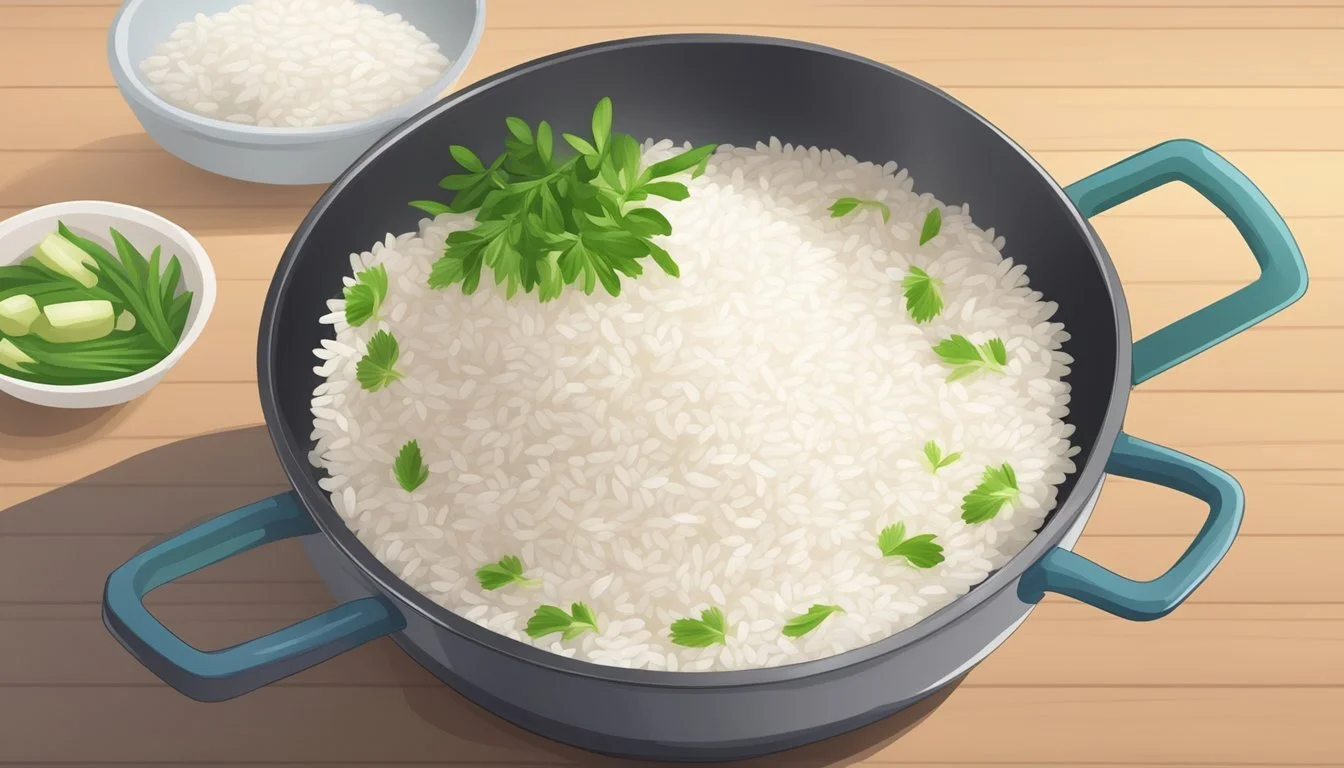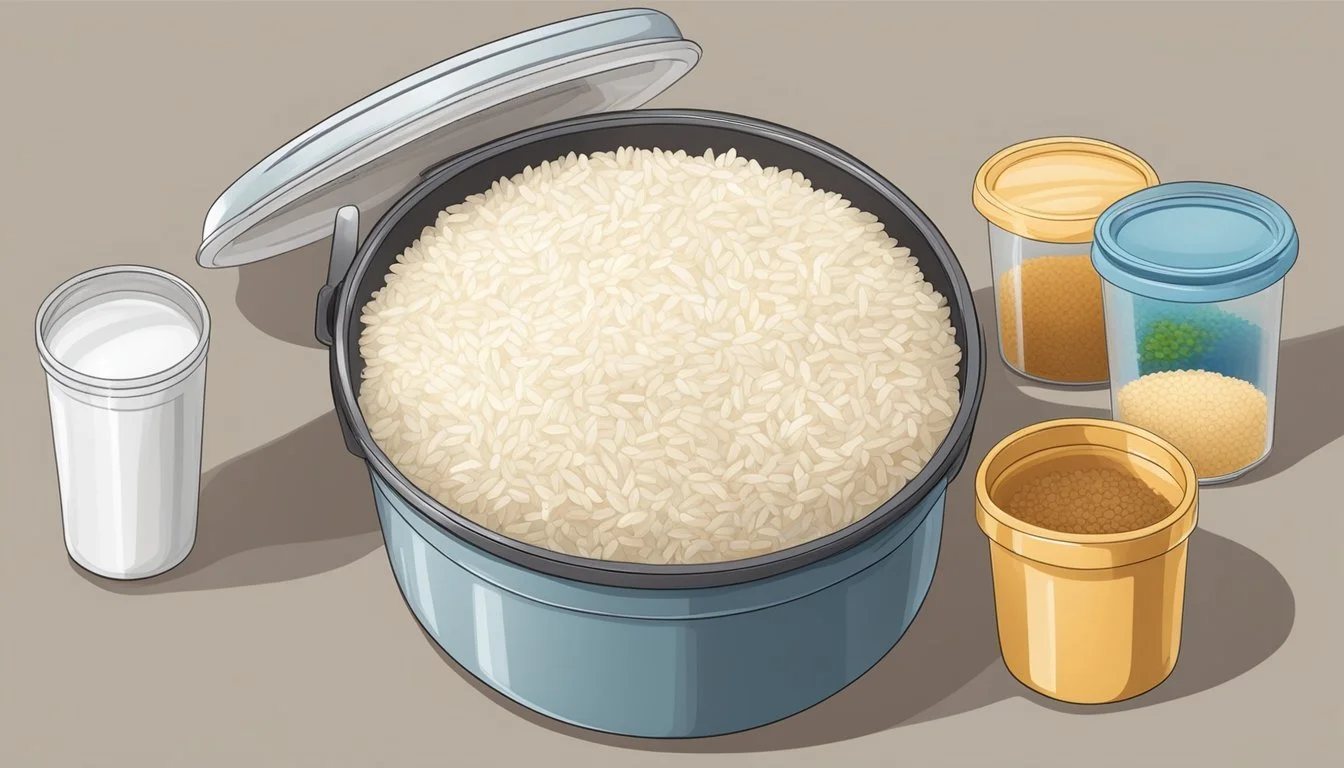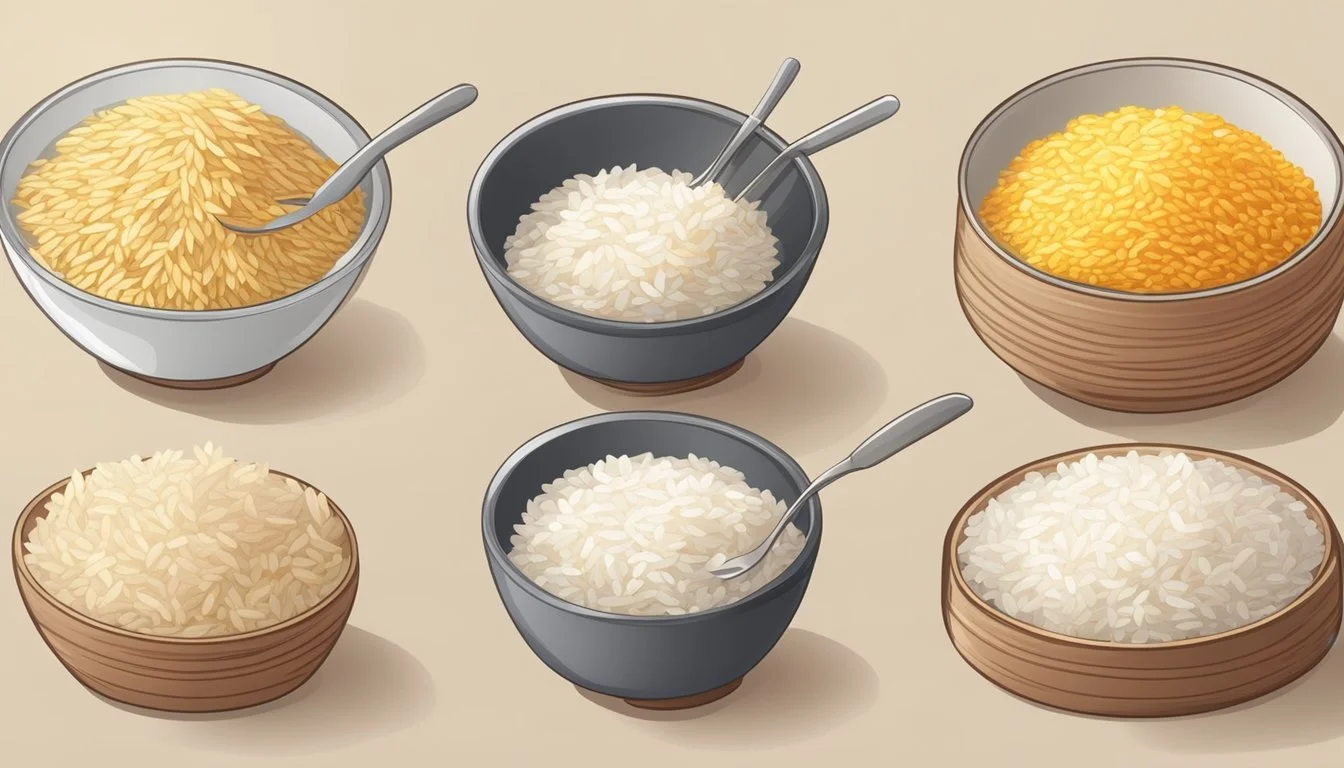How to Substitute Parboiled Rice for White Rice in Side Dishes
A Simple Guide
Substituting parboiled rice (What wine goes well with rice?) for white rice in side dishes is a simple way to bring additional nutritional benefits to a meal. Parboiled rice, which undergoes a precooking process in its husk, has a firmer texture and a slightly nuttier flavor than white rice. It is also less prone to overcooking, making it a resilient choice for a variety of dishes that traditionally call for white rice. Those looking to make a change in their cooking routines might opt for parboiled rice because it offers a different texture and may have a slightly lower glycemic index, which can be preferable for managing blood sugar levels.
When cooking side dishes, it's crucial to account for differences in water absorption and cooking times between parboiled rice and white rice. Parboiled rice generally requires a bit more water and a longer cooking time to achieve the ideal consistency compared to white rice. Additionally, because of its processing, it retains more of its natural vitamins and minerals, specifically B vitamins like thiamine and niacin, as well as minerals like magnesium. This means that a side dish made with parboiled rice will not only bring a unique texture and flavor profile to the table but also contribute a fortified nutritional aspect.
As a substitute in recipes, chefs need to tweak their approach slightly. Because parboiled rice has already been partially cooked, there's a reduction in overall preparation time despite its longer cooking period when compared to white rice. This characteristic allows it to meld well in various recipes ranging from pilafs to casseroles, and even salads, without altering the core essence of the dish. The versatility and sturdy composition of parboiled rice make it a valuable ingredient in the kitchen for those willing to experiment with their side dishes.
Understanding Rice Varieties
When substituting parboiled rice for white rice in side dishes, understanding the fundamental differences in rice varieties, their nutritional profiles, and their behaviors in cooking is crucial. This knowledge ensures the desired outcome in terms of taste, texture, and health benefits.
White Rice Fundamentals
White rice, a staple grain, comes in various forms including long grain, medium grain, and short grain. Long grain white rice such as Basmati or Jasmine is prized for its ability to remain separate and fluffy after cooking, making it ideal for stir-fries and pilafs.
Nutritional Profile:
Carbohydrates: High
Fiber: Low
Protein: Moderate
Vitamins and Minerals: Varied (often lower due to bran removal)
Glycemic Index: High
Parboiled Rice Essentials
Parboiled rice, sometimes called converted rice, is partially precooked in its husk, which drives nutrients from the bran into the grain. This results in a firmer, less sticky grain than white rice once cooked. Its processing increases the content of certain nutrients such as B vitamins.
Nutritional Highlights:
Carbohydrates: Moderate
Fiber: Higher than white rice
Protein: Moderate
Vitamins and Minerals: Higher than untreated white rice
Glycemic Index: Lower than white rice
Comparing Nutritional Values
Parboiled rice holds a nutritional advantage over regular white rice due to its preparation process. Notably, parboiled rice has more fiber and a lower glycemic index, meaning it can cause a slower increase in blood sugar levels. This may make it a better choice for those managing their blood sugar.
Nutritional Comparison (Per 1 Cup Cooked):
Nutrient White Rice Parboiled Rice Calories ~205 ~194 Fiber ~0.6g ~1g Protein ~4.25g ~5g Glycemic Index ~73 ~68
Exploring Other Rice Types
Aside from white and parboiled rice, a variety of other grains can be incorporated as side dishes. Brown rice retains its bran and germ, offering more nutrients and fiber. Grains like quinoa, farro, and barley serve as nutritious alternatives with distinct tastes and textures. They deliver a diverse range of vitamins, minerals, and other essential nutrients, beneficial for a balanced diet.
Preparation Techniques
When substituting parboiled rice for white rice in side dishes, the preparation techniques are key in achieving the desired texture and flavor. It's essential to understand the distinct cooking methods, the inherent differences in preparation steps, and the spices and seasonings that best enhance parboiled rice.
Proper Cooking Methods
To prepare parboiled rice effectively, one can use a variety of cooking appliances such as a stove, rice cooker, or microwave. The general rule for cooking parboiled rice on the stove is to boil it for 20-30 minutes. In a rice cooker, the water-to-rice ratio typically used is 2:1, which varies from that of white rice. If using a microwave, adjust the cooking time, as parboiled rice may require longer to reach the desired texture compared to white rice.
Preparation Differences Between White and Parboiled Rice
The main difference between white rice and parboiled rice lies in their respective preparations. Parboiled rice is soaked, steamed, and dried with the husk, which alters its texture. It is firmer and slightly less sticky than white rice. Before cooking, parboiled rice should be rinsed to remove excess starch, a step often unnecessary for white rice.
Seasoning and Enhancing Flavor
To elevate the flavor profile of parboiled rice, incorporate seasonings and spices. Begin by sautéing the rice in olive oil or butter prior to adding water, which enriches the taste.
Basic seasonings: salt and pepper
Advanced flavorings: garlic powder, parsley, or other spices
Carefully measure spices to avoid overpowering the rice. The aim is to complement the naturally nuttier taste of parboiled rice.
Incorporating Parboiled Rice in Dishes
When replacing white rice with parboiled rice in your recipes, it's crucial to understand the unique qualities of parboiled rice that can affect texture and flavor. Parboiled rice offers a firmer, less sticky texture after cooking, and a slightly nutty flavor that can enhance a variety of dishes from side dishes to main courses.
Substituting in Side Dishes
Parboiled rice can be an excellent substitute for white rice in side dishes. To prepare it, follow these basic steps:
Measure the rice: Use a one-to-one ratio when substituting parboiled rice for white rice.
Rinse: Thoroughly rinse parboiled rice before cooking to remove any remaining processing starches.
Cook: Parboiled rice may require more water than white rice. Start with a two-to-one water-to-rice ratio and adjust as necessary.
Flavor: Remember, parboiled rice carries a richer flavor, so reduce the seasoning slightly to avoid overpowering the dish.
Side dishes where parboiled rice shines include rice pilafs, seasoned rice, and rice salads. Its firmer texture holds up well against robust dressings and integrates seamlessly with various ingredients like vegetables and herbs.
Integration with Main Courses
Parboiled rice's robust texture ensures that it remains separate and non-clingy, making it an excellent addition to main courses. It offers a complementary backdrop to proteins like chicken or fish. Here are some key steps:
Substitute: Replace white rice with parboiled rice when the dish benefits from a less sticky rice texture.
Cooking time: Adjust the cooking time as parboiled rice typically takes longer to cook than white rice.
Pairing: Its neutral but rich flavor pairs well with bold spices and sauces, such as in Mexican rice or stir-fries.
Main course dishes such as oven-baked casseroles, stuffed peppers, and soups benefit from parboiled rice’s ability to absorb the flavors of the broth or sauce without becoming soggy.
Adjusting for Texture and Consistency
Understanding the textural differences between parboiled and white rice leads to better culinary results. Parboiled rice is drier and firmer, making it ideal for certain dishes:
Salads and Fried Rice: Its firmness makes it a superb choice for rice salads and fried rice, where one desires distinct grains that don't clump together.
Casseroles: For casseroles, parboiled rice can be used directly without prior cooking since its firmer texture will hold up during the long baking process.
Absorption method: When preparing with the absorption method or in a rice cooker, parboiled rice grains remain fluffy and separate.
Adjust liquid ratios and cooking times to maintain the desired consistency, ensuring a satisfying result in texture, whether you're aiming for fluffy or firmer qualities in your dish.
Health and Dietary Considerations
When considering substituting parboiled rice for white rice, one should consider the nutritional benefits, including how it affects digestive health, weight management, and blood sugar levels.
Fiber Content and Digestive Health
Parboiled rice contains more fiber than white rice; approximately 1 gram of fiber per 155-gram serving compared to less than 1 gram in the same serving of white rice. The higher fiber content promotes gut health by acting as a prebiotic, fostering a healthy environment for beneficial gut bacteria. Adequate fiber intake is essential for digestive health and can help prevent constipation.
Benefits for Weight Management
The enhanced fiber content in parboiled rice also contributes to weight management. Fiber provides a feeling of fullness, which can help reduce overall calorie intake. This, coupled with a lower glycemic index compared to white rice, makes parboiled rice a more suitable option for those looking to maintain or reduce their weight without sacrificing satiety.
Impact on Blood Sugar Levels
Parboiled rice has a lower glycemic index (GI) than white rice, which means it causes a slower rise in blood glucose levels. This is beneficial for individuals with diabetes or those trying to manage their blood sugar levels. The presence of more nutrients like thiamine and niacin also aids in energy production, which can have a positive impact on overall metabolic health.
Storing and Preserving Cooked Rice
Proper storage techniques are essential for maintaining the freshness and quality of cooked parboiled rice. Following specific refrigeration and freezing practices ensures that the rice retains its texture and flavor when reheated.
Best Practices for Refrigeration
Storing cooked rice (how long does cooked rice last?) in the refrigerator requires airtight containers to prevent contamination and moisture loss. Cooked rice should be refrigerated within two hours of cooking. Once cooled to room temperature, it can be safely stored in the refrigerator for up to 5 to 7 days.
Temperature: Keep at or below 40°F (4°C).
Containers: Use sealed containers or resealable plastic bags.
Portioning: Divide into smaller portions for quicker cooling.
Extending Shelf Life with Freezing
Freezing cooked parboiled rice can extend its shelf life significantly. To freeze rice:
Cool the rice: Let it reach room temperature.
Portions: Place servings in freezer-safe bags or containers.
Excess air: Remove air to prevent freezer burn.
Label: Mark with the date; frozen rice is best used within 1 to 2 months.
When rice is properly frozen, it maintains its quality and can be a convenient option for quick meals.
Reheating Tips and Techniques
To successfully reheat rice, one can use the microwave, stove, or oven, ensuring the rice has reached 165°F (74°C) to kill any potential bacteria.
Microwave: Add a tablespoon of water per cup of rice, cover, and heat, stirring periodically.
Stove: Place rice in a saucepan, add a small amount of water or bouillon for flavor, and heat over a low flame until it's steamy.
Oven: For larger quantities, spread rice in a baking dish, sprinkle with water, cover with foil, and reheat at 300°F until hot.
Precautions for Rice Storage
When storing cooked rice, it's important to follow certain precautions to avoid spoilage and foodborne illness.
Always cool rice quickly to prevent bacterial growth.
Do not leave rice at room temperature for more than two hours.
If rice smells off or has a slimy texture, it should not be consumed.
Use moisture-proof and airtight containers to preserve the quality of the rice.
Rice Alternatives and Substitutions
When substituting parboiled rice for white rice in side dishes, one can consider a variety of grains and low-carb options. Each alternative offers a different nutritional profile and cooking characteristics that may complement the intended dish.
Quinoa and Other Ancient Grains
Quinoa is a versatile ancient grain that serves as a complete protein source, making it a substantial alternative to white rice. It has a slightly nutty flavor and a fluffy texture post-cooking. Farro and barley are other nutritious ancient grains; farro offers a chewy texture and a rich, nutty flavor, while barley provides a satisfying full-bodied grain perfect for hearty dishes. Both are excellent substitutes in pilafs or cold salads.
Cooking Times:
Quinoa: Typically cooks in about 15-20 minutes.
Farro: Requires 25-30 minutes of cooking.
Barley: Takes about 30-60 minutes to cook, depending on whether it's pearled or whole grain.
Lower-Carb Options
For those seeking to reduce carbohydrate intake, cauliflower rice is a popular grain-free alternative to white rice. It's made by pulsing cauliflower florets in a food processor until they resemble rice grains and can be sautéed to mimic the texture of cooked rice. This option is significantly lower in calories and carbohydrates compared to both white and parboiled rice.
Nutrition Comparison (per 100g):
Cauliflower Rice: Approximately 25 calories, 5g carbohydrates.
White Rice: Roughly 130 calories, 28g carbohydrates.
Other Substitutable Grains
Basmati and jasmine rice are fragrant varieties that can suit the texture and flavor profile in dishes requiring white rice. Both are long-grain rices, with basmati being an extra long grain known for its aroma and jasmine offering a subtle floral scent and slightly sticky consistency. Converted rice is parboiled rice that has been partially precooked in its husk and can substitute for white rice well, adapting to various cooking methods with an increase in dietary fiber and nutrients compared to regular white rice.
Rice Types and Characteristics:
Basmati Rice: Distinct aroma, elongated grains, non-sticky when cooked.
Jasmine Rice: Floral scent, slightly sticky and soft after cooking.
Converted Rice: Firmer texture, increased nutrient retention, slightly nutty flavor.
Culinary Applications Beyond Side Dishes
Parboiled rice, with its slightly nutty flavor and firmer texture, finds its role extending beyond simple side dishes. It adeptly absorbs flavors and maintains its integrity in a variety of cooking techniques, proving its versatility in an impressive array of culinary applications.
Rice in Global Cuisine
Parboiled rice is a staple in many global dishes where its ability to retain shape and absorb flavors is critical. In India, it is often used as a base for biryanis where its separate grains complement the myriad of spices and herbs. Paella, a revered Spanish dish, can also welcome parboiled rice as a substitute for traditional bomba rice; its sturdy grain withstands the socarrat-making process while soaking up the rich saffron and seafood flavors. Stir-fries benefit from parboiled rice’s non-stickiness, resulting in a dish where each grain can be evenly coated with a balance of soy and sear from a high-heat wok.
Desserts and Sweet Treats
Parboiled rice can be incorporated into desserts where its firmer texture and ability to hold its shape under gentle cooking conditions is desirable. Rice pudding, for instance, can be enhanced by the chewiness of parboiled rice. Classic desserts, like the Italian torta di riso, can adapt parboiled rice for a pleasant bite amidst the creamy sweetness. Though less traditional, some sushi dessert recipes can experiment with parboiled rice to offer a new twist on the sweetened and vinegared rice wrapped in nori.
Frequently Asked Questions
When substituting parboiled rice for white rice, cooks may have concerns about taste, texture, and cooking methods. This section aims to address these common questions with clear and specific information.
Addressing Common Concerns
Flavor: Parboiled rice often has a slightly nutty flavor compared to the mild and subtle taste of white rice. The difference in flavor can enrich a variety of side dishes, adding a depth that might be especially appreciated in otherwise simple recipes.
Texture: The texture of parboiled rice is firmer and less sticky than that of regular white rice, which can enhance the structure of the side dish. It also means that parboiled rice is less prone to overcooking or becoming mushy.
Cooking Time: Parboiled rice typically requires a longer cooking time than white rice. Chefs should adjust their cooking times accordingly, ensuring the rice is thoroughly cooked but still firm.
Nutritional Profile: Parboiled rice retains more nutrients than white rice, especially in terms of fiber, thiamine, niacin, and magnesium. This nutritional difference makes parboiled rice a healthier alternative for those looking to make their side dishes more wholesome.
Glycemic Index: The glycemic index of parboiled rice is lower than that of white rice. Therefore, it causes a slower rise in blood sugar levels, making it a potentially better option for individuals managing their blood sugar.
By considering these factors, chefs can confidently substitute parboiled rice in their side dishes, enhancing both the nutritional value and the taste profile.






